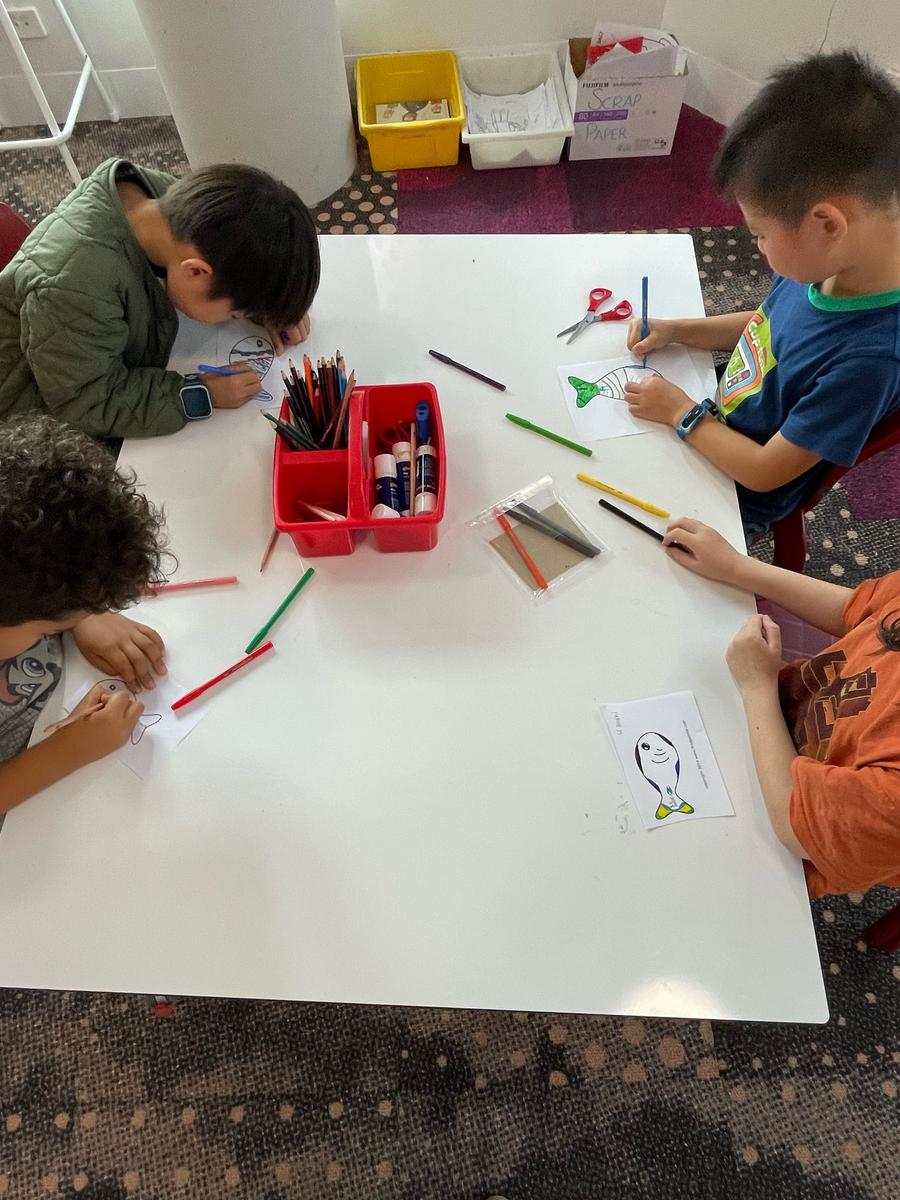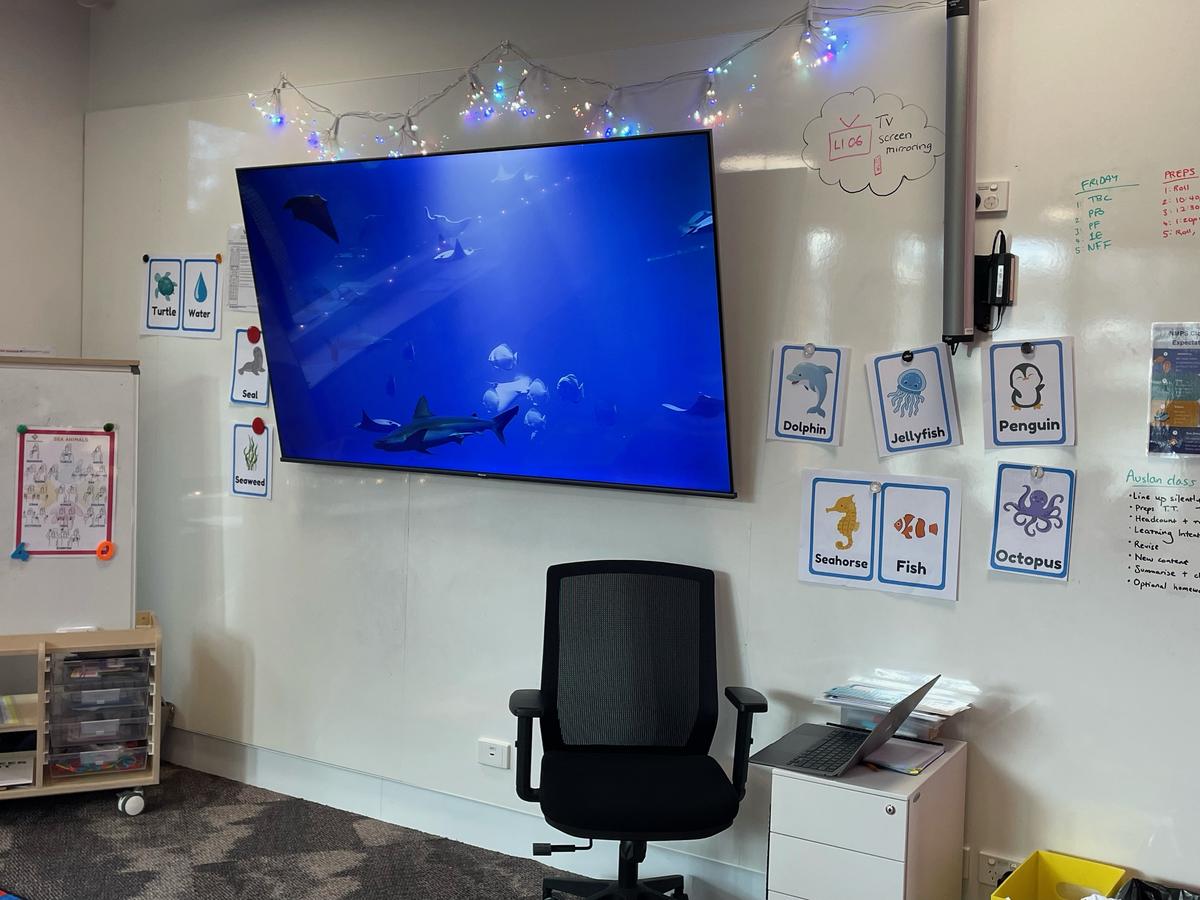Auslan

From Caen & Simone, Auslan Teachers
Under the Sea
As we move through the term, we are so pleased with how engaged, enthusiastic, and capable our students have been in their Auslan lessons. It has truly been a joy to watch them grow more confident in their signing and to see their curiosity deepen with each new topic we explore.
Over the past few weeks, we’ve focused on two exciting and vibrant topics: Sea Animals and Fruit. Both units have been packed with hands-on, visual, and playful learning experiences designed to help students not only build vocabulary but also begin using signs in real-life contexts.
Sea Animals
Our sea animals unit was a big hit with students! This topic was not only fun and visually rich, but also an excellent way to introduce students to category-based vocabulary, which supports memory retention and deeper understanding.
Activities included:
Decorate-a-Fish – Students designed and decorated their own unique fish, and then presented them to the class using Auslan to describe features such as colour, size, and type. This gave students the opportunity to use adjectives and descriptive signs.
Aquarium Visuals – We played relaxing underwater footage of sea animals, which allowed students to practice identifying and signing animals in real-time, making connections between visual input and Auslan output.
Auslan Songs – We incorporated songs featuring sea animals, which combined music with signing. This is a powerful tool for reinforcing vocabulary, rhythm, and memory.
Flashcards and Matching Games – Students used flashcards to match Auslan signs with pictures and words, helping them link visual, written, and signed language.
Fruit
Learning to sign fruit names has been another engaging topic—and one that’s highly relevant to students’ daily lives. Many children were excited to discover they could use these signs at home during meals or shopping trips, encouraging real-world application and home-school connection.
Activities included:
Fruit Bowl Game – A classroom favourite! Students signed the name of their fruit, listened for cues, and switched places in a lively Auslan-based version of musical chairs. This game helped improve receptive skills, quick recognition, and fluency.
Fruit Flashcards – These supported vocabulary building, allowing students to learn to identify, fingerspell, and sign a wide variety of fruits—from everyday options like apple and banana, to more challenging signs like pineapple and strawberry.
Conversation Practice – We encouraged students to form simple sentences using fruit vocabulary, e.g., “I like apple” or “My favourite fruit is orange,” incorporating both signing and fingerspelling for unfamiliar or favourite fruits.
Decorate my Fruit Bowl – Students designed and decorated their own unique fruit bowl, and then presented them to the class using Auslan to describe features such as colour, size, and type. This gave students the opportunity to use adjectives and descriptive signs.
We always encourage families to ask students to show what they’ve learned. You might ask:
“Can you sign your favourite fruit?”
“What sea animal is your favourite?”
“Can you show me how to say ‘I like bananas’ in Auslan?”
Practising at home even for a few minutes a week can boost retention and confidence significantly.
We are so proud of the progress our students are making and can’t wait to explore more exciting topics with them in the coming weeks. Thank you for supporting Auslan as a part of your child’s education—it’s a valuable skill that fosters communication, empathy, and inclusivity.



